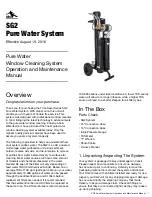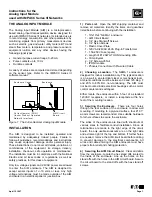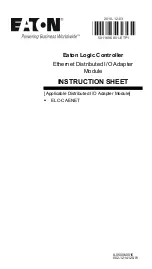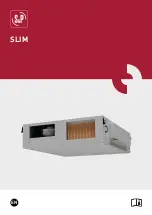
SG2 Pure Water System Operation and Maintenance Manual - 7
17. Troubleshooting
16. Storage
1. Ensure feed water is open and has water to it.
2. Check all hoses for kinks or blockage.
3. Connect to alternate water source.
4. Replace Sediment Filter (P/N WF2CSC-21).
5. Replace DI Cartridge (P/N WF2CDI-21).
1. Damaged RO membrane – replace (P/N WF2440-RO).
1. This is normal during system operation. This water
is the discharge water and it contains a very high
TDS. This water is not potable but is not harmful
to plants or surrounding areas. DO NOT DRINK
DISCHARGE WATER.
1. Remove DI Cartridge & Re-test system –
replace if flow increases (P/N WF2CDI-21).
2. RO Membrane is plugged –
replace RO membrane (P/N WF2440-RO).
3. Feed water temperature too cold for system
to process.
4. Replace Sediment Filter (P/N WF2CSC-21).
1. Verify supply water has acceptable flow & pressure.
2. Replace Sediment Filter (P/N WF2CSC-21).
3. Replace DI Cartridge (P/N WF2CDI-21).
DO NOT ALLOW DI or RO filters to DRY OUT. Dry DI
resin will lose its charge and therefore become unable
to remove dissolved solids from the water. Dry RO
membranes will develop cracks which allow more
dissolved solids to pass through the membrane. This
will deplete the downstream DI filters at a faster rate.
abc recommends that you run water through your
carbon and RO membrane filters once every 2 weeks
or so, not only to help keep your filters moist but to
also wash out any microorganisms that might try to
grow in your filters. Always run your source water
through the carbon filter before the RO membrane
when flushing the filter.
abc strongly recommends flushing out the RO
membrane filter once every 2-4 weeks to ensure
the maximum lifespan of the filters. When flushing
the RO membrane filter, the source water should be
passing through the Carbon/Sediment filter before
the RO membrane. This will prevent damage to the
membranes from Chlorine and Chloramine. Periodic
flushing will ensure that the filter membrane does not
dry out and will reduce the chance that biological
growth will foul the filter elements while in storage.
If periodic flushing is not feasible, we recommend that
users wrap filters tightly in plastic wrap or plastic bags
and then seal with tape. This will reduce the chance
that the filter dries out when in storage. Store filters
and any unit with a pump indoors over the winter. Do
not allow the filters or pump to freeze. Failure to
do so will destroy your filters and pump. After filters
have been stored this way, they will need to be flushed
thoroughly before use. Leaving filters wrapped for
extended periods of time can lead to biological fouling,
which is why we recommend periodic flushing over
wrapping them for storage.
Storage - Short Term (2-4 Weeks)
Low supply water flow or pressure
High pure water TDS and/or high pure water flow
Water coming out of discharge hose
High discharge flow with low water flow -
Good system pressure
Low system pressure with low production
and/or low discharge water flow
Storage - Long Term (Winterizing)


























